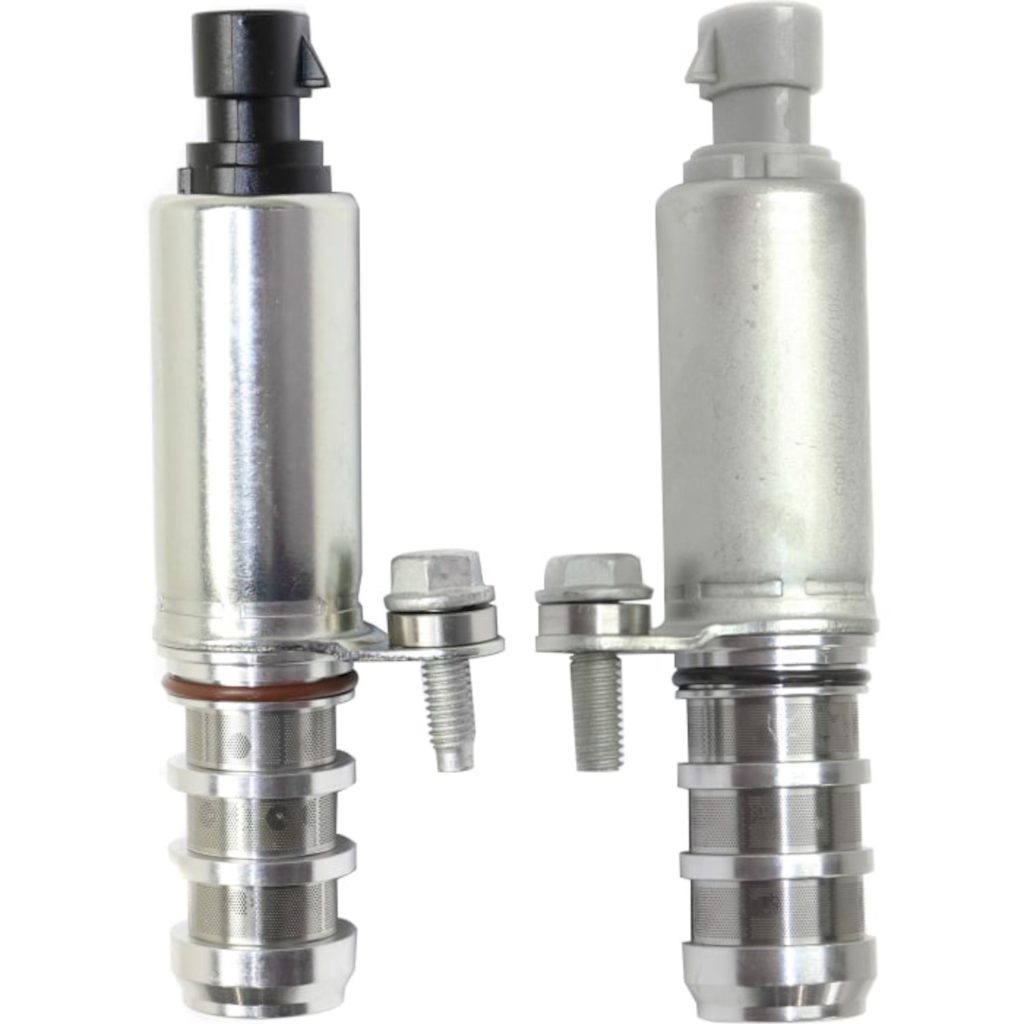News
Bad VVT Solenoid Symptoms: What You Need to Know
Summary
- The Variable Valve Timing (VVT) solenoid controls oil pressure to activate the valve timing mechanism, typically the camshaft actuator (also known as the phaser).
- A malfunctioning VVT solenoid can cause rattling noises and performance issues with your engine.
- Different automakers have unique names for their VVT systems. For instance, Ford uses Twin Independent Variable Camshaft Timing (Ti-VCT), while BMW calls it VANOS.
If you’re a car owner or enthusiast, you’re probably familiar with the term Variable Valve Timing (VVT) – but what about the VVT solenoid? Depending on the manufacturer, you may hear it referred to as a camshaft actuator solenoid, oil control solenoid, VANOS solenoid, or a variety of other names. Regardless of what it’s called, the VVT solenoid serves a critical role in your vehicle’s performance.

A VVT solenoid applies oil pressure to activate the mechanism that adjusts valve timing (usually an actuator at the end of the camshaft).
So, what exactly does it do? The VVT solenoid uses oil pressure to control the valve timing system. In most vehicles, the system involves a camshaft actuator (also known as a phaser) located at the end of the camshaft. While the exact design may vary across manufacturers, including variations like Honda’s VTEC, the principle remains the same.
Let’s dive into the most common signs of a bad VVT solenoid and how it can affect your vehicle’s performance.
Common Symptoms of a Faulty VVT Solenoid
VVT solenoid failure is a frequent issue in modern vehicles with variable valve timing. Here are the most common symptoms to look out for:
1. Check Engine Light (CEL) Illumination
The Powertrain Control Module (PCM) monitors the VVT solenoid’s operation. If it detects an issue, the check engine light will illuminate, alerting you to a potential problem.
2. Engine Performance Issues
A malfunctioning VVT solenoid can cause improper valve timing, which may result in rough idling, sluggish acceleration, or poor fuel efficiency. You might also notice a drop in overall engine performance.
3. Unusual Engine Noise
If the VVT solenoid isn’t activating the camshaft actuator correctly, you may hear a rattling or ticking noise coming from the engine. Some automakers, like Ford, have issued Technical Service Bulletins (TSBs) to address these concerns.
Can You Drive with a Bad VVT Solenoid?
While it’s technically possible to drive with a faulty VVT solenoid, it’s not advisable. Continuing to drive with this issue could lead to further damage, especially to components like the VVT actuator. It’s best to address the problem promptly to avoid additional repair costs.
What is a VVT Solenoid?
To better understand the VVT solenoid’s role, it’s important to grasp the basics of how your engine’s camshafts and valves work together.
How Camshafts and Valves Function
The camshaft(s) control the opening and closing of the engine’s valves. These valves allow air and fuel to enter the cylinders and exhaust gases to exit. The crankshaft, connected to the pistons, drives the camshaft’s rotation.
When the engine runs, air mixes with fuel, and this mixture is ignited by the spark plugs, creating small explosions. These explosions drive the pistons, which, in turn, rotate the crankshaft and power the vehicle.
A timing chain (or belt) links the crankshaft to the camshaft, ensuring the valves open and close at the right time in relation to the pistons.
How Does Variable Valve Timing (VVT) Work?
In a traditional engine, the valve timing is fixed, meaning the timing of when the valves open and close is constant. With VVT, however, the camshaft position can be adjusted to change the timing of the valves. This allows for improved engine performance, better fuel efficiency, or both.
A key component in the VVT system is the hydraulic actuator at the end of the camshaft. This actuator alters the camshaft’s position to adjust valve timing. The VVT solenoid controls the oil pressure to activate this actuator.
Typically, each camshaft actuator has its own solenoid, and depending on the vehicle, the actuator may be located on either the intake or exhaust camshaft, or both.
VVT System Naming Differences Across Automakers
Different manufacturers use different terminology for their VVT systems. For example:
- Ford refers to its system as Twin Independent Variable Camshaft Timing (Ti-VCT).
- BMW calls their system VANOS.
Despite these differences, the function of the VVT solenoid remains largely the same across brands, controlling the oil pressure that activates the camshaft actuator and adjusting valve timing.
Conclusion
The VVT solenoid plays an essential role in ensuring optimal engine performance by controlling the camshaft actuator and adjusting valve timing. If you experience engine performance issues, odd noises, or a check engine light, it’s crucial to inspect the VVT solenoid and address any potential problems early to avoid further damage. Whether you call it a camshaft actuator solenoid, oil control solenoid, or VANOS solenoid, understanding its function can save you from costly repairs down the road.
